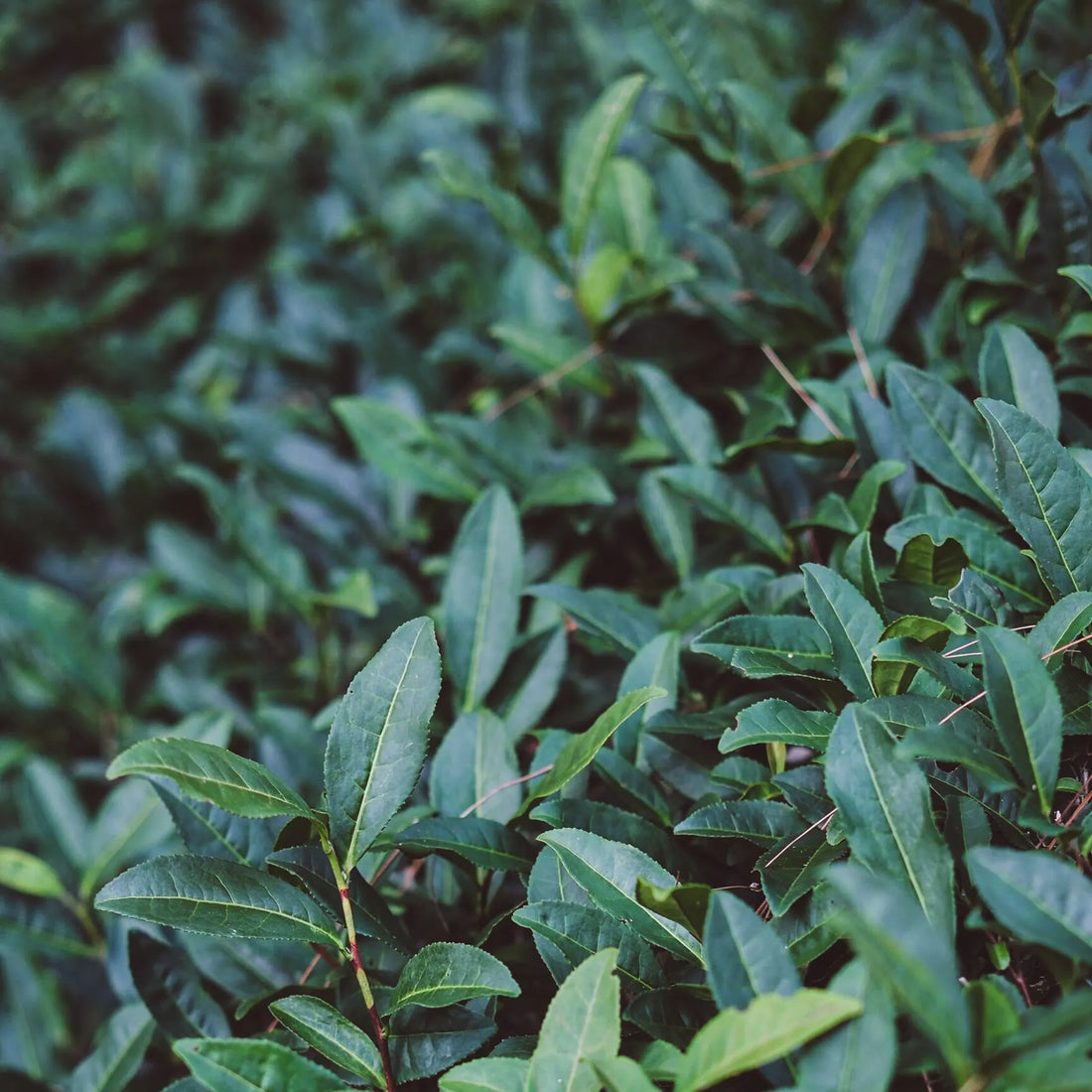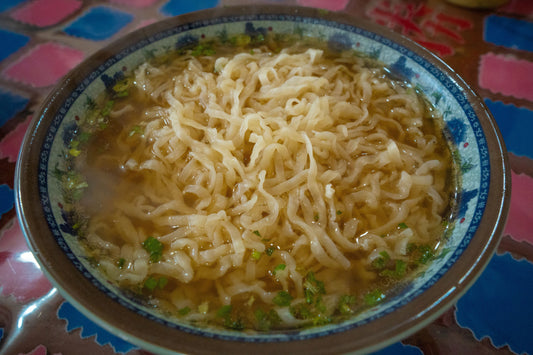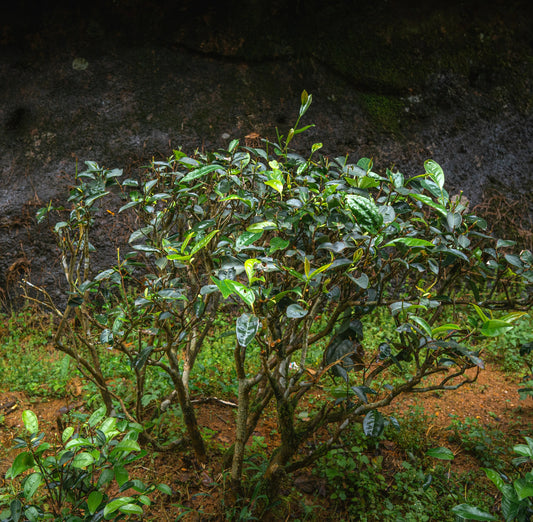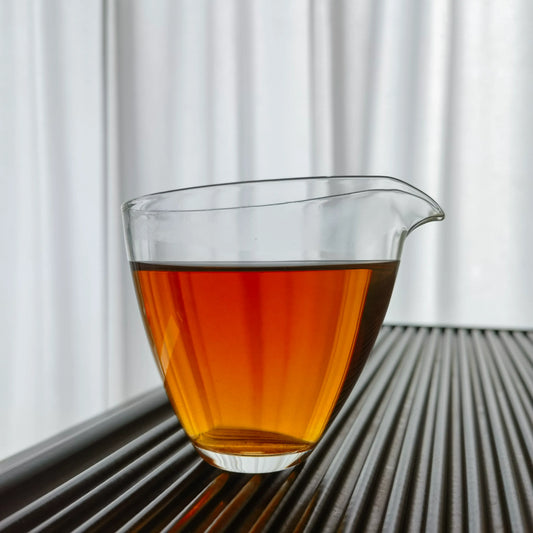
The Four Famous Bushes of Wuyi Rock Tea & Their Legends
From the “Five Famous Bushes” to the “Four Famous Bushes”
In 1943, the famous tea scholar Lin Fuquan first introduced five Wuyi representative tea cultivars in his work The Production, Processing, and Marketing of Wuyi Tea. These five famous cultivars are: Da Hong Pao (大红袍), Tie Luo Han (铁罗汉), Bai Ji Guan (白鸡冠), Ban Tian Yao (半天腰), and Shui Jin Gui (水金龟). Together, they are referred to as the Five Famous Bushes (Wu Da Ming Cong).
Later, in 2001, the Chinese Tea Cultivar Compendium formally adopted this grouping and named them the “Five Traditional and Precious Wuyi Bushes,” following Lin’s original classification.
In recent years, however, due to the exceptional fame and cultural status of Da Hong Pao, some scholars and tea professionals have begun referring to it as a unique symbol of Wuyi tea, standing apart from the others. As a result, the remaining four cultivars, Tie Luo Han, Bai Ji Guan, Ban Tian Yao, and Shui Jin Gui, are now commonly known as the Four Famous Bushes (Si Da Ming Cong) of Wuyi Rock Tea.
The Legends of the “Four Famous Bushes”
1.Tie Luo Han (also known as “Iron Arhat”)
A monk at Huiyuan Temple gained fame through his renowned tea-making abilities. The tea he made combined an enchanting aroma with sweet flavors that were rich. Those who consumed the tea experienced heightened clarity and alertness. Everyone nearby loved his tea.

Tea Trees of “Iron Arhat” Rock Tea
The monk possessed dark skin and powerful muscles which gave him a statue-like appearance of an arhat (a Buddhist guardian figure). His powerful build led locals to name him “Iron Arhat”.
While walking along a rocky cliff one day he discovered a special tea tree growing in the cliff's crevice. The tree reached great heights and exhibited strong branches that were pale yellow. The tea tree’s fuzzy buds possessed a cotton-like texture while giving off a pleasant scent. The young leaves were picked by him and then he returned to the temple where he prepared rock oolong tea from them.
He extended an invitation for everyone in his neighborhood to taste his newly made tea. “What’s the name of this tea?” they asked. Unable to provide an answer to their question about the tea’s name, he shared the story of how he found the tea tree with them.
After hearing his story, the villagers decided: Because he found the tree and created the tea, we should give it the name ‘Tie Luo Han’ (Iron Arhat) which represents our strong monk. The tea received its designation which reflects both the monk’s essence and the mountain’s offering.
2.Bai Ji Guan (also known as “White Cockscomb”)
Once, many years ago, a tea farmer in Wuyi set out to visit his father-in-law for his birthday. The tea farmer brought a large rooster as a present from his home, one of the best he had. However, that day, the sun was particularly hot. The higher and higher he climbed, the more he sweated and perspired. When he reached a cliff on the way to Huiyuan Rock, the heat had become unbearable and he was exhausted. He placed the rooster under a tree in the shade and the rooster sat down, while the tea farmer himself sat nearby to catch his breath.

Tea Trees of “White Cockscomb” Rock Tea
Suddenly, a shrill, cold sound rang out, “Gaaawk!”
The tea farmer leapt upright, nearly out of his wits, as a green snake, as thick as a thumb, had crawled past his foot. Panicked, the tea farmer came running towards the rooster. It lay motionless on the ground, as a drop of blood fell slowly from its comb to drip onto the root of a tea bush nearby.
Infuriated, the tea farmer dug a shallow hole under the tea tree and buried the rooster in the ground. Then, he continued the rest of his journey empty-handed and dejected.
The tea bushes near Huiyuan Rock that year grew strangely after that day. The bushes shot up fast, lush, and bulging, taller than the plants surrounding them. The leaves gradually changed from deep green to light green and then to an almost white color. Even from afar, a sweet, potent smell could be smelled wafting on the wind.
The tea leaves that were produced by these bushes were no less peculiar. The liquor in the teacup was a soft, yellow-white color, not dark as other yancha. The tea was pure and bright with a fragrant flower taste, making it hard to put down the cup.
3.Ban Tian Yao (also known as “Halfway up the Sky”)
The name Ban Tian Yao is also interesting, it has a mysterious origin, which is said to have happened during the Yongle period of the Ming Dynasty (1403–1424).
The Location of “Halfway up the Sky” Mother Trees
According to legend, an abbot of the Yongle Chan Temple at Tianxin Temple once dreamed that there was a pure white hawk in front of him. This hawk carried a radiant gem in its beak in its mouth, and was being chased by a giant eagle. At that time, the hawk flew to the cliff of Sanhua Peak, on the mountain cliff, holding the gem in his beak, but halfway through he was exhausted and dropped the gem on the mountain cliff.
Believing that it might be a divine revelation, he ordered a young monk to go up the mountain and look for the trace. With the help of a rope, he finally reached the steep cliff of the mid-mountain. He did not find any jewels, but in a crack of the cliff, there was a green tea seed, which had germinated and was sprouting delicate roots.
He carefully picked it up and brought it back to the monastery. The abbot cherished it by hand. After the tea seedling grew to one foot, the monk brought it back to the same mountain, and planted it at the location where the green seed was picked. He planted it at the mountain cliff, because he thought that since the green tea seed was a gift from the hawk, it was destined to be at this place. It was an ancient place in the sky, between the earth and the heavens.
Since the pronunciation of the character “hawk” (鹞) and the pronunciation of the character “waist” (腰) are the same in Chinese, the name was later mistakenly written, and the name was spread as “Ban Tian Yao” (半天腰).
4.Shui Jin Gui (also known as “Golden Water Turtle”)
Soon after a torrential rain, a mountain temple monk went out for a walk through the forest. Taking a look around, something caught his attention. On the rock of Langu, the monk saw an area of fresh green tea shoots shining like jade. They glittered in the light, just like an enormous golden turtle squatting by the side of a rain-filled crack in the rock, as if drinking from it.

Tea Trees of “Golden Water Turtle” Rock Tea
The monk had been at the temple and practiced there for a long time, knowing every tree and stone around the monastery. To find such a green bush that was clearly not there before, was a very strange and wonderful discovery.
He rested his bamboo staff and slowly walked towards the tea bushes. The closer he got, the more defined the image became. A strange tea tree had been washed down by the storm and took root there during the rainfall.
But unlike other tea trees, this one had branches that spread out in a way that resembled the marking of a turtle’s shell. At close range, the leaves were as textured as turtle scales. When seen from a distance, the thick and shiny green leaves sparkled like jade, and the entire bush looked uncannily similar to a regal golden turtle sitting on the rock.
The monk, in great astonishment and joy, ran back to the temple to report to the abbot. The old abbot, a man of wisdom and understanding of heaven and earth, had a monk immediately beat the drum and ring the bell to assemble everyone in the temple. He declared: “The Jade Emperor in the heaven is bestowing upon us a gift, golden leaves and heavenly branches. Put on your robes! We must go receive this treasure.”
The monks filed after the abbot in a solemn procession, lighting incense and reciting scripture. Together, the group went on a hike to the location near Niulan Keng, where the tea tree had washed ashore. The monks prostrated and made offerings to the divine gift, before building a stone base around the tea bush and assigning a group of monks to guard it in shifts.
Touched by such worship, the “golden turtle” turned tea tree started to grow more and more vigorous each day. Its leaves glowed like emeralds, and in the sunlight, they emitted a golden shimmer, just as the creature it once was.
The tea made from its leaves had a very special fragrance and taste. For this reason, it was named Shui Jin Gui, or “Golden Water Turtle”.





